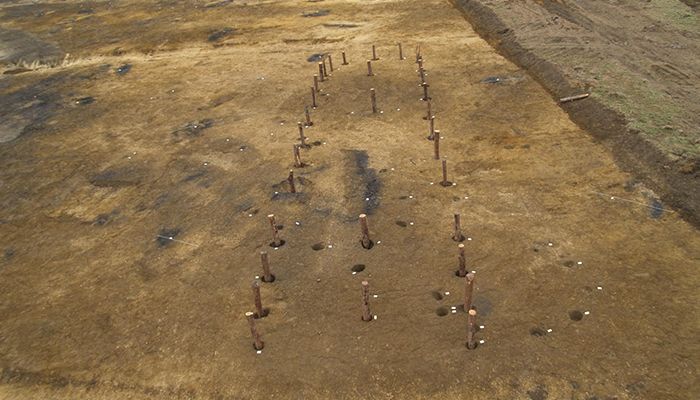
International Desk
Publish: 28 Aug 2023, 10:54 am

Photo: Collected
The final piece of the jigsaw, according to archaeologists excavating at a sizable Neolithic site in northeast France, has been found: indications of a permanent settlement.
150 years after the first flints were uncovered, a settlement was discovered at the massive Neolithic site of Marais de Saint-Gond, providing unique insights into its social organization.
Researchers at France's national center for scientific research (CNRS) found the settlement this summer. "This is the last piece of the jigsaw we were missing," said Remi Martineau.
In Marais de Saint-Gond, in northern France, 135 hypogeum -- built subterranean chambers -- and 15 sizable flint mines have previously been located on 450 hectares.
Since flints were initially unearthed a century and a half ago, five megalithic covered lanes, 10 axe polishers, and fields nurtured by controlled fires have also been uncovered.
According to Martineau, there is "no equivalent" in all of Europe, and this new find paves the way for a significant advancement in our knowledge of "the economic, societal, and territorial organization of the Neolithic."
Around 136 kilometers (84 miles) from Paris, in the commune of Val-des-Marais, a trench for the construction of a palisade was found.
The prehistoric enclosure was circling a hill, enclosing an estimated area of one hectare (2.5 acres), according to the archaeological evaluations.
In the process, an apse building was cleared, near a large rubbish pit some 20 metres in diameter, along with wells.
"The site was completely structured," said Martineau.
"The foundations of our society are already there."
These successive discoveries are the result of a research programme started 20 years ago, led by the CNRS.
The last campaign, which brought together CNRS, the joint laboratory Artehis, the University of Bourgogne Franche-Comte and the culture ministry, involved 50 people including researchers from France and abroad, as well as 20 "excavators", mainly archaeology students.
In addition, a little oval mother-of-pearl artifact that Martineau describes as a "museum piece" was found.
It is a potential progenitor of the button, which dates approximately 3,400 to 3,300 years ago, and is punctured with two holes in the center.
Researchers anticipate that if more excavations are carried out in the future, the rest of the site will be as well-preserved given its current state of preservation.
Source: AFP
Subscribe Shampratik Deshkal Youtube Channel
Topic : France Neolithic Village CNRS Archaeology Research
© 2024 Shampratik Deshkal All Rights Reserved. Design & Developed By Root Soft Bangladesh